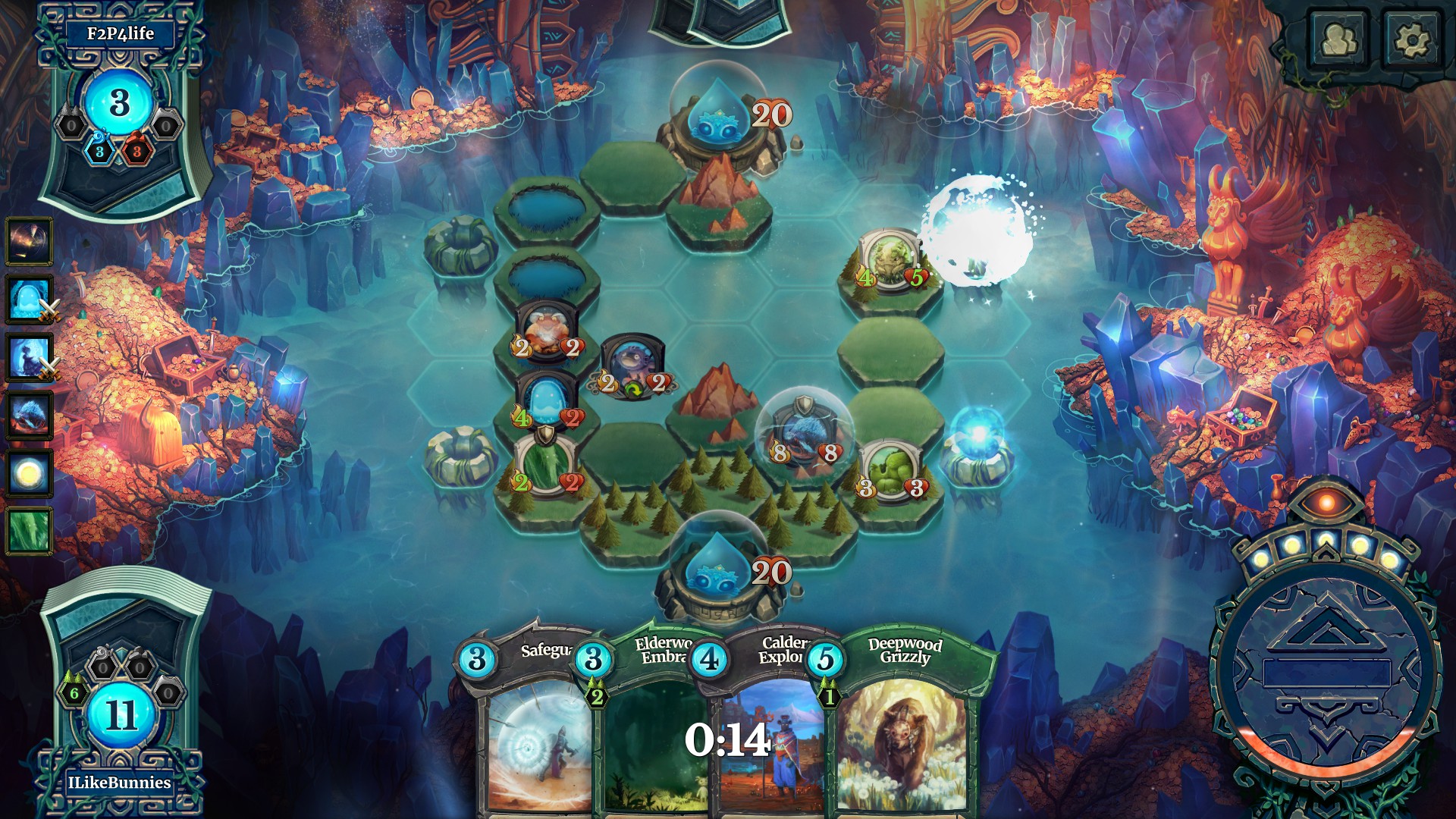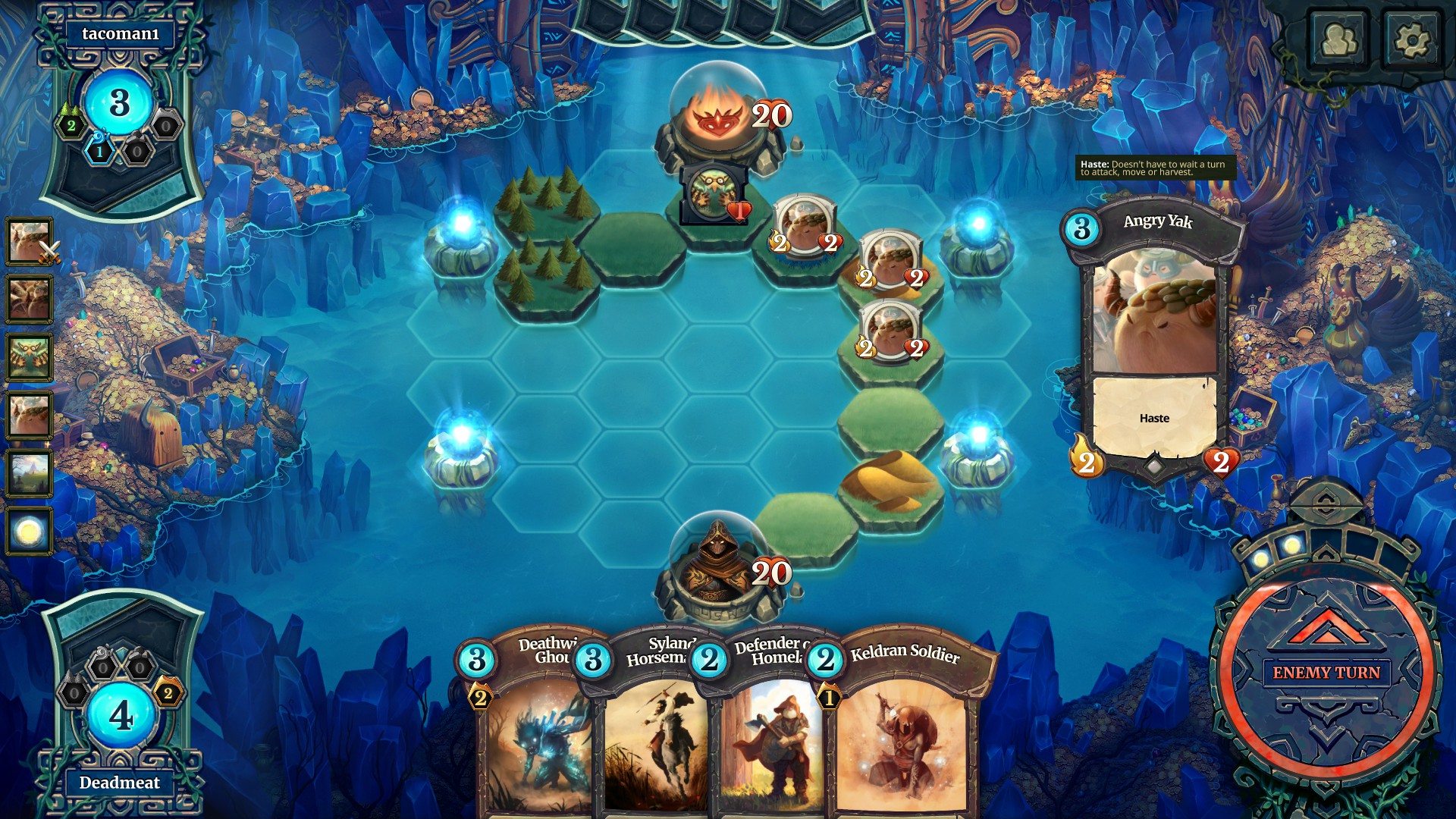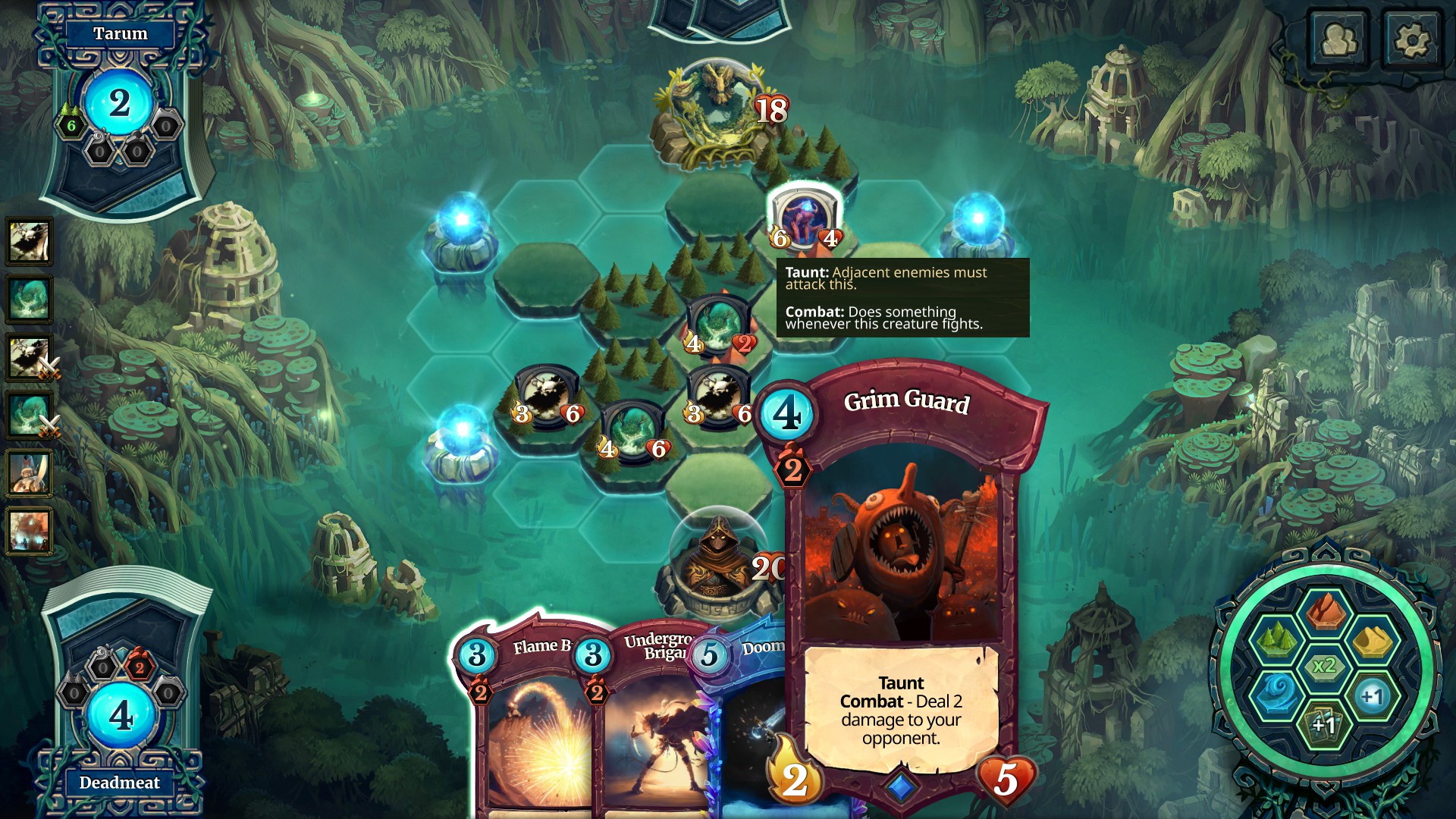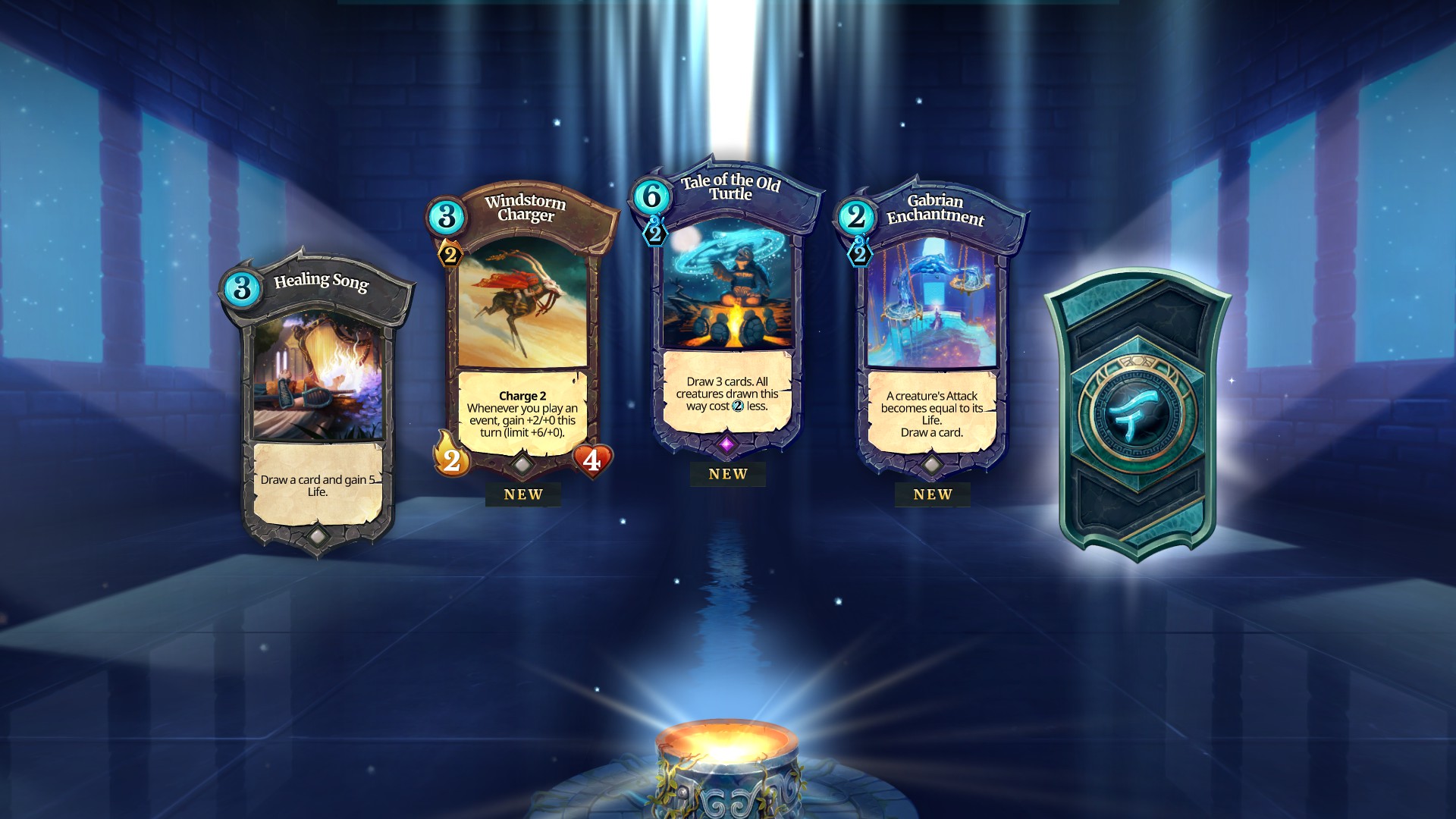Faeria’s living board makes it stand out from the card game crowd
Building the board with land cards in each Faeria match adds an XCOM-like layer of strategy where positioning is key.

When Magic: The Gathering first made collectible card games a thing in the mid-90s, a flood of them followed. For a while I was into one called On The Edge, which swapped the format from wizards summoning monsters to conspiracies controlling citizens—the cards in the front ranks were layers of pawns and dupes who had to be exposed before the real masterminds in the back ranks could be dealt with. Each card game tweaked the Magic formula in their own way.
Digital card games have followed the same trend, even down to keeping similar mechanics for attacking and defending while innovating in the space between players. The Elder Scrolls: Legends has its lanes, Duelyst has its grid, and Faeria—well, Faeria takes some explaining.
The dueling wizards of Magic: The Gathering played land cards, then tapped them for the mana points they needed to cast spells. Faeria takes this idea further. Between you and your opponent—gods rather than mere wizards—is an ocean divided into a hex grid. On your turn in addition to playing cards you can play land, pulling prairies and mountains out of the sea. It's like laying out the board for a game of Settlers of Catan as you go.
The land's not just there for visual flourish. You can only summon creatures and structures on your own land, and while neutral cards can be played on any habitat, colored cards need to be matched—red on mountains, yellow on desert, green on forest, and blue on lakes. Controlling land near the wells at the board's corners gives bonus mana points called 'faeria'—and at the far ends of the board are orbs that house the gods, which they splash down into like comets at the start of each match. The gods are you and your opponent, and to knock off the traditional 20 hit points your rival god has, you march across the land you've made and get right up in their oversized face.

What this shifting board brings to Faeria is positioning. Some card games resemble JRPGs where heroes line up on opposite sides of the screen and then wail away at each other. Having to move across the board brings Faeria closer to XCOM. Where each character stands is as important as what special ability they can unleash. It's possible to flank and rush and block, and if the space isn't there to let you do that then you create it for later.
The grid in Duelyst has a similar effect, but it's the same every time, an eternally blank canvas for units to march across. The board Faeria plays out on changes every match. Maybe you build a bridge straight up the middle to rush across, making use of the fact that the neutral lands called prairies are available two-for-one to get there faster—though neutral land means you'll be stuck playing neutral cards like Yaks (Faeria is way into its cute yaks) until you bring some of the slower-to-construct mountains, deserts, or lakes into play. Maybe you spread out to control the wells on your side and turtle until you draw your best cards, or maybe you try to push up and take a well your opponent wanted.
Broadly speaking, Yellow decks are great at rushing, thanks to plenty of desert-themed cards with abilities like Fly and Charge. Green decks tend to be defensive, with foresty cards like Seedling slowly growing stronger every turn. Nautically themed Blue decks let you leap off the land and swim right up to wells with Aquatic cards, although your fish can then be blocked in with well-placed land if you don't get lakes on the board. Red decks are aggressive, all lava and demon cards, typically better in a fight than Yellow but slower at getting into position.
The biggest gaming news, reviews and hardware deals
Keep up to date with the most important stories and the best deals, as picked by the PC Gamer team.

There's other stuff unique to Faeria beyond the board. Faeria points are saved from turn to turn, meaning you're not pushed to spend it instantly—saving is a valid strategy. If you don't want to lay down land on a turn you can get an extra point or draw another card instead, making card-draw abilities less powerful. Deckbuilding is easier thanks to ready-made “formulas” unlocked as you level up, which can then be edited for specific effect or to work in that rare card you just found in a chest.
Like every free-to-play card game that isn't Hearthstone, Faeria feels generous in its rewards, like it's showering you with chests to keep you from leaving.
Then there's the art style, a warm and painterly look that brings to mind the illustrations from collections of fairytales or the kind of book where tweens get transported to a land ruled by a dark lord. It's refreshingly soft compared to the pixels of Duelyst, or Hearthstone's parade of cartoonishly exaggerated characters. I don't care about the fluff that explains why gods are fighting in Faeria, but I do like to look at its pictures of glowing wisps in swamps and goofy yaks in fields.

What held me back from enjoying Faeria while it was in early access was how hard it was to find a game. Compared to Duelyst, matchmaking took much longer and the community felt fractured and thin. Now that it's been fully released player numbers have grown, and the recently launched Hub for its community has probably helped, with guides and livestreams and an online deckbuilder that lets players share and comment on decks.
It'd be nice if Faeria managed to find its niche among all the other digital card games, although if the boom and bust tabletop collectible card games went through in the 90s is any indication, it'll need plenty of luck.

Jody's first computer was a Commodore 64, so he remembers having to use a code wheel to play Pool of Radiance. A former music journalist who interviewed everyone from Giorgio Moroder to Trent Reznor, Jody also co-hosted Australia's first radio show about videogames, Zed Games. He's written for Rock Paper Shotgun, The Big Issue, GamesRadar, Zam, Glixel, Five Out of Ten Magazine, and Playboy.com, whose cheques with the bunny logo made for fun conversations at the bank. Jody's first article for PC Gamer was about the audio of Alien Isolation, published in 2015, and since then he's written about why Silent Hill belongs on PC, why Recettear: An Item Shop's Tale is the best fantasy shopkeeper tycoon game, and how weird Lost Ark can get. Jody edited PC Gamer Indie from 2017 to 2018, and he eventually lived up to his promise to play every Warhammer videogame.

